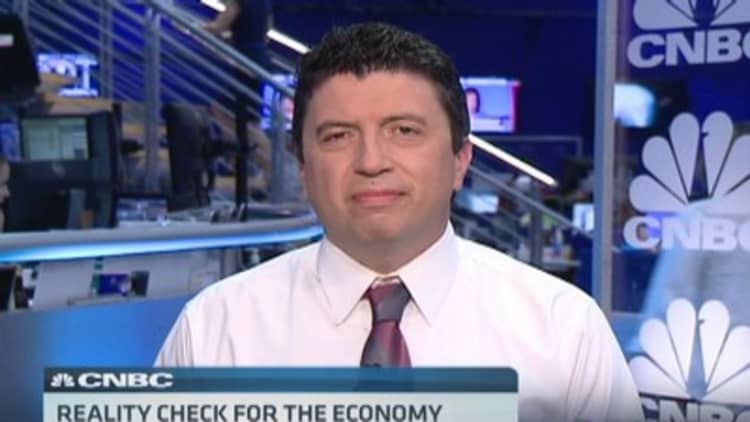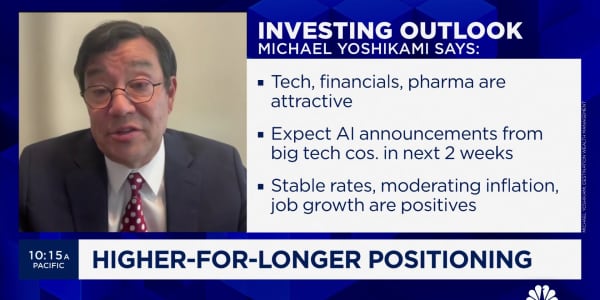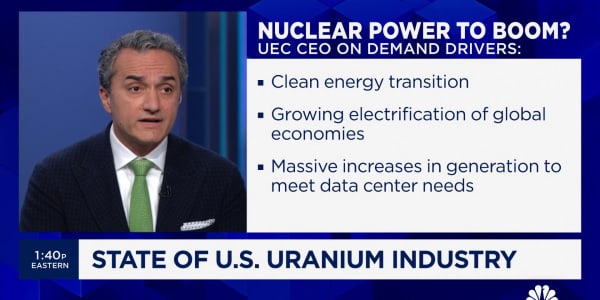
Wednesday's swarm of economic news was enough to give plenty of pause to the notion that the U.S. economy is in for a growth surge for the rest of the year.
Disappointments in private-sector job growth and exports but an improving climate in the services industries sent conflicting signals. Yet, these are part of a clearer trend: an improving economy, no doubt, but one that seems less likely to meet lofty expectations.
"Whether this means 2.5 percent growth or something north of 3 percent is not obvious, but all of the evidence still points to something closer to the former rather than the latter," Peter Boockvar, chief market analyst at The Lindsey Group, said in a note analyzing some of the morning's numbers.
Private-sector job growth stood at 179,000, according to ADP and Moody's Analytics—a decent enough number on its face but considerably below expectations of 215,000 and an indicator that Friday's nonfarm payrolls report may struggle to hit the 218,000 Reuters median consensus estimate.
Read MorePrivate sector job growth falls short of hopes
Then, news hit that the U.S. trade deficit had ballooned to $47.2 billion in May, well above estimates for $40.1 billion. That came primarily due to an increase in imports that defied expectations.
"Overseas demand was going to drive exports and give a nice boost to growth. What we're seeing is after an outsized drive last month, exports have declined," said Lindsey Piegza, chief economist at Sterne Agee. "Certainly overseas growth has improved, but we're talking minimal improvement as we're seeing very uneven growth across the global economies, particularly in Europe."
Read MoreTrade gap balloons; US regains appetite for imports
Indeed, economists and investors had been pinning their hopes on a variety of trends, not all of which have occurred, to offset a rough winter that held back growth: a recovering U.S. consumer, an improving housing market and a jobs climate that is getting noticeably better—all factors expected to set off a less-accommodative Federal Reserve, which is cutting the level of its monthly bond-buying program and is expected to start raising interest rates next year.
Most of the conditions set for an aggressive recovery have been met on some level but missed on others.
For example, expectations for increased corporate spending have been met somewhat through a push in mergers and acquisitions activity. Even in that realm, though, there have been mixed signals: Dealogic reported Wednesday that although global M&A activity in dollar value is at a three-year high of about $178 billion, some $300 billion worth of deals have been withdrawn—double the amount in 2013 and at a six-year high, thanks largely to Pfizer's unsuccessful bid for AstraZeneca.
The aggregate result of the mixed indicators is that economists are likely to ratchet down their projections for growth, with an already ugly first-quarter gross domestic product number likely to come down a few notches and hopes for a second-quarter rebound expected to be tempered.
Read MoreWage growth flows to top 1 percent: Study
Boockvar projects Q2 GDP to get cut about 0.4 percentage points from 3 percent to 3.5 percent expectations (according to the most recent CNBC survey), while Q1 will see its final print coming in two or three tenths lower from its -1 percent.
Some economists are holding fast, though: Capital Economics still holds to a comparatively conservative 3 percent Q2 growth estimate, and others believe there are plenty of bright sides to the mixed bag of numbers.
There was, after all, that Institute for Supply Management services index Wednesday morning that showed the sector growing, with a slight improvement in employment and new orders offsetting drag in exports and inventories.
Read MoreService sector growth accelerates in May
"We now think that net exports will subtract substantially from growth in the second quarter," Citigroup economist Peter D'Antonio said in a note. However, he added, "The effect on overall output is not clear, because the surge in imports may be a sign of increased domestic demand, which would offset the wider deficit."
—By CNBC's Jeff Cox






